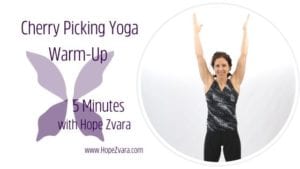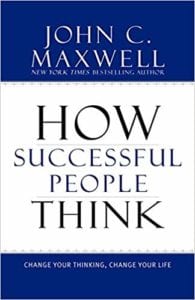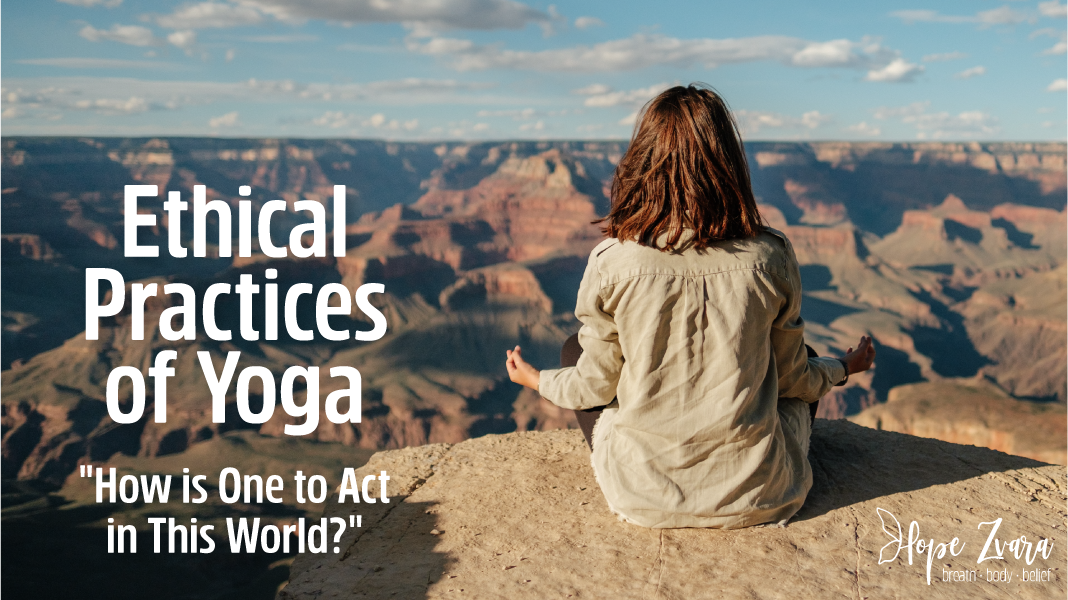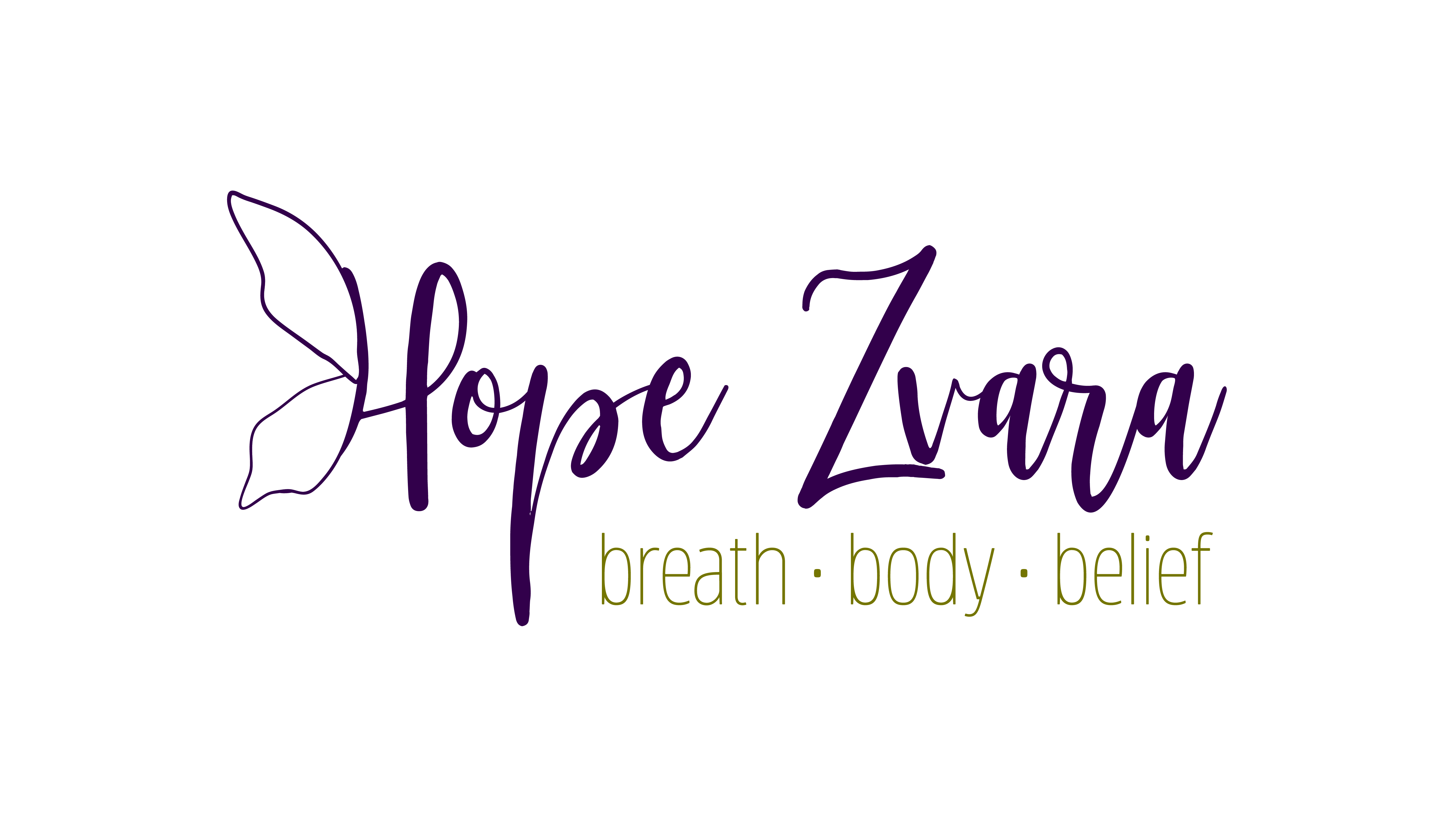
by hope | May 27, 2020 | Lifestyle
Did you know that May is #MentalHealthMonth?
According to the National Alliance on Mental Illness (NAMI), a mental illness is a condition that affects a person’s thinking, feeling or mood. #MentalHealthMonth was created to increase public awareness of mental health conditions and to break down the stigma associated with mental illnesses.
Mental health conditions are far more common than you think, mainly because people don’t like to, or are afraid to, talk about them. However, it’s important to know that you are not alone. Everyone experiences the ups and downs of mental health and there is nothing wrong with seeking help to manage it.
My Fears
As a mom of three and someone who has battled mental health challenges most of her life, my greatest concern upon having children was that my children would struggle with their mental health in the same ways that I did. However, I believe that my own struggles actually made me a better parent. I was more aware and attuned to the needs of my children and never once did I hesitate to seek help when I thought they needed it.
So, what can we do, as parents, to help improve the overall mental well-being of our children?
1. COMMUNICATE
Communication is the key. Good communication with children involves listening well and talking in ways that encourage your child to listen to you. Communicate the super uncomfortable and challenging things, too. Being open to talking about all kinds of feelings, including anger, joy, frustration, fear, and anxiety will help you and your child to navigate potentially tricky situations in the future.
2. RECOGNIZE THE NEED FOR HELP
This may seem silly or even stupid to some reading this. As a parent who has struggled with this most of her life, I just don’t get why seeking aid in this way for your child or children is still a “last resort”, or for some, not even an option.
My oldest is very emotional. Last year, he was caught teasing and talking under his breath during class to a few of his classmates about how they looked. When I confronted my son and talked to him about why he was doing what he was doing, in all honesty, he told me that he wasn’t that sorry for some of it. I knew right then and there was something bigger going on. Not in regards to the relationship with these other children, but within himself. My son needed someone else to talk to and it was my job to find someone else who could give him perspective and insight beyond that of my husband and myself.
3. SEEK HELP
That summer, I arranged for my son to see a counselor. We called his sessions “his class with Michael”. During that time, a few parents and family members questioned my decision to seek outside help for my son. They often said, “Why are you doing that? He’s fine”. But, I knew he wasn’t. I saw a young boy struggling to process how he felt. I saw myself in him.
Seeking help was the best thing I could have ever done for my son as his mom. It gave us a place to communicate with our son and it gave my son a place to communicate openly without judgment. Michael played a HUGE role in my son’s confidence, understanding, and processing of emotions. Most importantly, Michael was a huge game-changer for my son and his future. He now has insight and coping strategies that will serve him his entire life. An insight I wish I would have had at his age. If I would have, then, maybe, my story would have been a bit different.
4. DON’T JUDGE
For many parents, at the first sign that their child appears to be sick, there is no concern or questioning on getting them medicine to help them feel better. So why aren’t we looking at our children’s mental health, their mental well-being, in the same light as their physical well-being?
I urge you all, parent or not, to put all your personal issues aside and see your kids as they are. To attend to them in the best possible way that has nothing to do with you. Seeking help is not a bad thing. Would you ever look down on someone for seeking treatment for a medical ailment? More than likely, no. So, I urge you to do the same for you and your child’s well-being, especially when it comes to their mental health and wellness.
So, I ask you, during #MentalHealthMonth–what does your child need? As someone who has struggled most of her life with mental health and wellness concerns, I can tell you that having a therapist has been one of the best things I have done for myself and it made all the difference for my son, too.
If you are interested in learning more, check out these great resources on Amazon.

by hope | Feb 7, 2020 | Fitness Friday, Working With Hope
Learn Cherry Picking Warm-Up. This video is a part of our Asana Video Library
training materials for both students and teachers where the forgotten art of
simple movements is explored.
The old me, some twenty years ago felt the deep need to both impress others while simultaneously trying to share parts of myself that were wounded and needed healing for nothing more than to be free of the burdens of carrying them around daily.
Roughly ten years ago I was spun out on a journey to better understand how the body moves as I was not getting the teachings nor explanations I was looking for inside the yoga world. Constantly hearing phrases like “That’s normal”, or “It will get better with time“, and my favorite “do what feels right for you“, seemed like scapegoat responses for a lack of real understanding about how the body moves and why students were feeling the things they were.
Now don’t get upset, I’m not summarizing everyone. But in my personal experience, teacher after teacher, training after training, the why’s, and how’s were continually left out of the what’s and when’s as it pertained to teaching yoga and experiencing poses.
The art of teaching warm-ups and looking at a student and seeing where their challenges were, even if they wouldn’t share them, was something I wanted to refine even more. Why do they walk like that? Why does their shoulder hurt and ever seems to get better? How is it they can do this yoga pose, but not that one? And how do I convince students to value basic moves and sequences as that is what they also need and not just the complex poses and fast-paced moves?
More than ten years I spent studying outside the yoga world to better understand how the body moved and why. Stepping back onto the mat I had a fresh new perspective and a deep understanding of the why’s and how’s I was lacking prior. Tailoring my language and eloquently sequencing my classes to work from the ground up helped students navigate their own bodies and I began to see a shift in my students making better choices all on their own as to what they choose to do when it came to asanas.
How did this happen?
I began to connect their every day living to what they were feeling. I gave them the control to choose with real parameters to gauge their progress pose to pose. Warm-up to final asana. Connecting the dots to how and where the could be doing the very things they are learning in their everyday life.
The Cherry Picking Warm-Up and many others became a means to when they walk up from a long sleep or stretch at their desk. And by doing the very warm-ups like Cherry Picking and dozens of others on the mat, it began to give them confidence and permission to do them off the mat. Because truly, what good is yoga if you don’t carry it with you into your everyday life?
Stepping outside the yoga arena and stepped into a whole new beautiful world of functional movement. It excited me in so many new ways. Mainly because, for the very first time in my entire life, I began to understand the body, it’s parts, and how these parts move.
As a yoga teacher and movement specialist, I find it critical to incorporate basic movements no matter how unfancy they are in your classes. The whole idea of a warm-up is to “warm-up” the body for more detailed movements. And having taught tens of thousands of students over the last nearly twenty years I have noticed a common thread of students lacking the basic abilities to do everyday movements.
Benefits of incorporating warm-ups (like Cherry Picking Warm-Up) into your yoga practice:
- Walk with full range movement in their knees and ankles
- Fully reach overhead without pain
- Bend forward without rounding
- Walk with a full hip extension, not just flexion
- Rotate their torso when turning to the side
- Move their neck side to side without pain
- Walk on various surfaces with bare feet pain-free
- Squat, reach or bend freely

Watch the Cherry Picking Video Now HERE
Benefits to Practicing Cherry Picking Warm-Up:
-Melts the fascia in and around the shoulder
-Stretches the side (lateral) body
-Stretches the lower back
-Stretches the obliques and lateral hip
-Gets you breathing
-Expands the lungs
-Feels good
-Is a basic life movement everyone should be able to do
**BONUS** If you haven’t watched the video yet, it will take you through step by step how to work through the pose as a student and a teacher. Take note of the variety of positive cues and direct references so you and your students can get the most out of this pose.
And if you love this video on the Cherry Picking Warm-Up and want more don’t forget to check out the “How To” video on how to do High Lunge safely and effectively!
Love these teachings? Hop over to HopeZvara.com and head on inside the Mindful Movement & Yoga Online Studio
I’ve said it a million times, how you do things, even yoga asana things matters. So let’s start by honoring the need and art of warm-ups and get you reaching high and feeling great in your everyday life!

by Hope Zvara | Jan 1, 2020 | Simplify Your Life
Happy New Year! It’s an opportunity we get every 365 days. What a great feeling! A new year, a new perspective, and a fresh start.
As a new year begins, many people make resolutions in an effort to better themselves. However, I don’t necessarily like resolutions. Resolutions tend to set people up for disappointment. So, instead of making resolutions again this year, set goals.
To be honest, I’ve never used to spend time to sit down and set goals for myself. Of course, I always had an “idea” of what I wanted to do each year but that’s pretty much it. So, when I sat down to write out my personal and professional goals for next year, I realized that I had NO idea how to do it. What was I supposed to do? What was the point? None. However, it’s something that I needed to figure it out and figure out quick.
Enter, John Maxwell.

John Maxwell is the New York Times bestselling author of How Successful People Think. In his book, Maxwell’s advice really hit home. He encourages people to be “big-picture thinkers.” Big picture thinkers keep broader, bottom-line goals in mind no matter what the task is and no matter how big or small it is. He states that “the purpose of a goal is to focus your attention and give direction, not to identify a final destination.” Finally, something that makes sense! Set smaller goals to reach your bigger goal–GENIUS!
So, as I sit down to set my goals for the new year, I now have a plan. My smaller goals will allow me to reach my bigger goals. I have my goals written down and for the first time in forever– I know what I need to do and I know what I must do in order to get there. There is a lot less “I wonder” and “I hope” thoughts filling my head and to be honest, it feels good. I am approaching the new year with the confidence and tools that I need to be successful. What a great feeling.
Whether you are beginning a fitness routine, creating a better plan of attack for meal planning, or yes, tackling the task of running your own business–set goals, stay the path and remain mentally clear. You can do it!
Check out these 5 Tips on Setting REALISTIC Resolutions!
Here’s to an amazing New Year! Cheers!

by Hope Zvara | Nov 4, 2019 | Yogic Living
Yogic philosophy and the Yamas and niyamas (the first and second limbs of yoga) offer us a roadmap on how to treat ourselves and others, and as a result, connect more fully with our inner truth. The eight limbs of yoga offer anyone who is willing to partake a wonderful guide to more mindful living, and they teach us the ethical practices of yoga. This pathway to absolute truth is one combining inner and outer work, physical practice, our breath, mindfulness, concentration, and meditation. Yoga is not a religion, but it is an opportunity to live a better quality of life, and a more purposeful one at that.

1. Yamas: Restraints for One’s External Tendencies or Behavior.
- Ahimsa – non-violence. Are you a bulldozer or a forklift to those around you through your thoughts, words, and actions? Ask yourself if this is lifting people up or crushing people down.
- Satya – truthfulness, honesty. Ahimsa helps us to not use truth as a weapon. Satya questions us being nice vs. being real.
- Asteya – non-stealing. We steal others time, attention, power, and confidence. ADHIKARI: the right to know or the right to have; you are a visitor in life, not an owner. Take note of all that you take that is in fact not yours. Reflecting on the first two yamas, we may steal more than just someone’s property.
- Brahmacharya – nonexcess. “Acting in Brahman (Holy Spirit)” means entering each day with a sense of holiness rather than indulgence, remembering that everything is sacred.
- Aparigraha – unselfishness, non-possessiveness. Non-attachment and being able to “let go.” We are like a monkey in a cage with a banana; we choose our attachments rather than our freedom. Why?
2. Niyamas: Self-Control Over One’s Internal Tendencies.
- Saucha – internal and external purity. What is your process of purity? Think about what used to be our “Sunday best” purity in each moment? Focus on consistent purity rather than selective purity.
- Santosh – contentment. Gratitude will keep us out of our own pettiness and allow us to receive our own abundance from the Universe. We tend to “play things up” when we don’t feel content with what is; here we must take responsibility for ourselves and our actions.
- Tapas – austerity or self-discipline. You are not rocked by the external world. Here we are offering the next higher version of ourselves. A crisis is a terrible thing to waste …
- Swadhyaya – scriptural study or self-study. Knowing our true identity as divine. The world reflects what we are seeing, not what is actually there; it is a mirror. Self-study breaks the ego (Ahamkara). Take some time each day to read and study that which invokes the greatest good in you.
- Ishvara Pranidhana – surrender to God or universal consciousness. Life is not meant to be a battle. We are not here to have to “prove,” but rather to become one. Here we no longer need the moment to be our way; we see a higher purpose for us.
3. Asana: Physical Exercises.
We can use asana to help train the physical body and teach discipline and all that is reflected in the Yamas and niyamas. We treat ourselves as an aspect of the divine.
Our breath is everything; without it, we do not exist here on this earthly plane. Our breath is the gateway to the many dimensions and layers of the self and higher consciousness. (Note that Ayama means a dimension, not control.)
5. Pratyahara: Withdrawing the Mind.
Understanding that this is not just our senses but the mind as well. Iyengar says pratyahara means “to draw toward the opposite.” The normal movement of the senses is to flow outward and this limb is concerned with going against that grain; a difficult reaction. Our minds are flooded with negativity; we must work to move towards the opposite.
6. Dharana: Concentration.
We are a society of quick and CliffsNotes. Unfortunately, we can miss out on valuable knowledge and relationships by skimming over everything. The value of pointed thought, self-analysis and introspection cannot be understated. Time spent on self-observation of inner thoughts, desires, and conduct helps guide us toward Dharana.
“Dhyani,” which means “to think of.” In the process of meditation, we calm the mind, which leads to the realignment of our inner self to the right path. Meditation is everything we engage in; initially, we sit to meditate and eventually, we live to meditate.
8. Samadhi: Enlightenment.
There are different stages of Samadhi and one can experience it at any moment: a blip, a moment, that takes you towards your bliss. We all experience these blips. The goal of the above practices is to attain Samadhi infinitely.
This post was originally written for Nature’s Pathways.

by hope | Oct 23, 2019 | Lifestyle, Wellness Wednesday, Yogic Living
Being stressed appears to be the new norm. Tasks just keep piling up and finding time to de-stress seems to never fit into the day’s schedule. And when it comes to work, it may not be realistic to drop everything and hit up a yoga class or take a day at the beach. We can use mantras and affirmations to keep our mind calm and focused without detracting from our productivity.
As a yoga and mindfulness expert of more than seventeen years, I firmly believe in making small little changes to our lives. And at the end of the day, those small little changes all add up to big results.
And that is why incorporating the use of mantras into your life and workday can be a very effective way to curb stress, help you become more productive, and keep a “zen” state even in the most stressful of times.
The use of mantras can benefit anyone who incorporates them into their lives.
Benefits include:
- Reduced stress and anxiety
- Soothes stresses from technology hangover
- Assists in shedding neurotic habits
- Boosts immunity
- They are FREE
What is a Mantra?
A mantra is a word or syllable repeated to help curb the mind and keep focus. It acts as a form of meditation. One would often use a mantra in yoga and meditation to help keep “the mind on the mat.” They are often also used in everyday life and given from teacher to student to help overcome obstacles, challenges, and transitions.
Incorporating mantras into ones’ workday can be a wonderful way to combat stress, keep better focus, improve confidence, and keep negative, self-sabotaging thoughts at bay.
How Do I use a Mantra?
If you are a yogi working with a teacher, one would often recommend you recite your given mantra for 108 times, X amount of times per day for so many days. (108 is a special number in the yogic world.)
Anyone can begin to use mantras and instantly benefit. And that means you can start today.
You may already have used a mantra and don’t even know it.
Affirmations are forms of mantras in the English form. Mantras can be more powerful as the vibrational tone. The sound of a mantra when spoken correctly aids the brain and our inner state more deeply than its English sister.
No matter where you start, a refocusing on the mind will surely follow, with commitment and regular repetition.
Where do I Start?
One of my favorite mantras that I was given during my stay at an ashram during one of my yoga teacher trainings is a mantra to Ganesha.
Ganesha is seen as the remover of obstacles. When chanted to, it can help you overcome, move through, or see more clearly that which is in front of you and needs to be dealt with.
Mantra for the Workplace
“Om Vakratundaaya Hum” (Ohm Vah-krah-TOON-die-yah Hoom)
When chanting this, you would either chant using a mala or even just chant this frequently during the day to help keep the mind focused and aid in working through difficulties.
If you would rather not use a Sanskrit mantra, then using affirmations (which many of us do already) is a great place to start.
I think of mantras as a way to change the internal voice we have. For many, that internal voice is negative and downgrading.
Affirmation for the Workplace
“Peace is within my reach” or “I am calm and focused”, or “Obstacles are opportunities”.
No matter what mantra or affirmation you choose, they don’t work and cannot help you if you don’t use them. Check out this blog post to learn how to craft your own personal, positive affirmations.
Please comment and share with me what mantras you have chosen for yourself!
Namaste.
This post was originally published in the March 2018 edition of Inspiyr.








